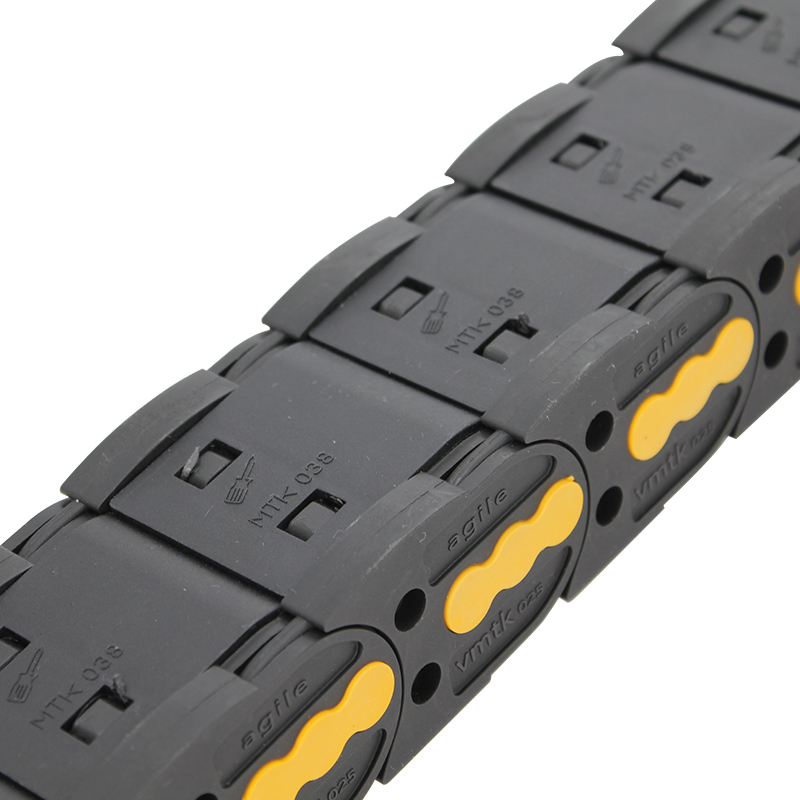Understanding the Functionality and Importance of Energy Chain Cables in Modern Applications
Understanding Energy Chain Cables A Comprehensive Overview
In the ever-evolving landscape of automation and manufacturing, the efficient transfer of energy, signals, and data is paramount. This is where energy chain cables come into play. These innovative solutions are designed to protect and manage cables in demanding environments, ensuring reliability and safety in operations.
An energy chain, also known as a cable carrier or drag chain, serves a critical function in various industrial applications. It acts as a protective housing that organizes and guides cables or hoses in motion, allowing them to move freely without tangling or wearing down. Energy chain cables are predominantly used in applications involving robotics, machinery, and automated systems, where mobility and flexibility are required.
Components of Energy Chain Cables
Energy chain systems typically consist of several key components
1. Cable Chains The primary structure of an energy chain is made up of interconnected links that form a chain-like assembly. This chain allows for bending, twisting, and movement while containing the cables within.
2. Cables and Hoses Inside the energy chain, various cables—such as power cables, data cables, and pneumatic hoses—are organized and secured. The choice of cables depends on the specific application's requirements.
3. End Stops These are devices that prevent cables from coming out of the chain at the endpoints, ensuring they remain secured during movement.
4. Mounting Brackets These are used to attach the energy chain to the frame of the machinery or structure, providing stability and support.
5. Guide Support Some systems incorporate additional guide supports to further direct the movement of cables inside the chain, enhancing the overall functionality.
Benefits of Using Energy Chain Cables
energy chain cable

The implementation of energy chain cables presents numerous advantages
1. Protection Energy chains shield cables and hoses from mechanical damage caused by friction, abrasion, and environmental factors, significantly prolonging their lifespan.
2. Organization These systems provide a structured way to manage multiple cables and hoses, preventing tangling and ensuring that they remain orderly during operation.
3. Flexibility Energy chain cables enable free movement in applications involving robots or movable machinery, facilitating dynamic operations without any hindrance.
4. Reduced Downtime With better cable management and protection, the risk of cable failures is minimized. This leads to lower maintenance costs and reduced downtime in production lines.
5. Safety By containing cables and hoses within a robust chain, the risk of tripping hazards and accidents in the workplace is significantly reduced.
Applications of Energy Chain Cables
Energy chain cables are versatile and can be found in a myriad of industries, including
- Manufacturing Used in automated production lines for robots and conveyor systems. - Cranes and Heavy Machinery Essential for managing cables in applications involving lifts and mobile equipment. - 3D Printers Ensure smooth movement of wires and hoses, avoiding any disruptions during printing operations. - Automotive Employed in robotic assembly lines and testing equipment to streamline production processes.
Conclusion
Energy chain cables play an essential role in modern automation and machinery, providing an effective solution for cable management and protection. Their design and functionality contribute significantly to the efficiency, safety, and reliability of various industrial applications. As technology continues to advance, the adoption of energy chain systems is likely to increase, paving the way for enhanced performance and greater innovation in the manufacturing sector. By understanding and utilizing energy chain cables, industries can ensure that they remain competitive in a rapidly changing market.








